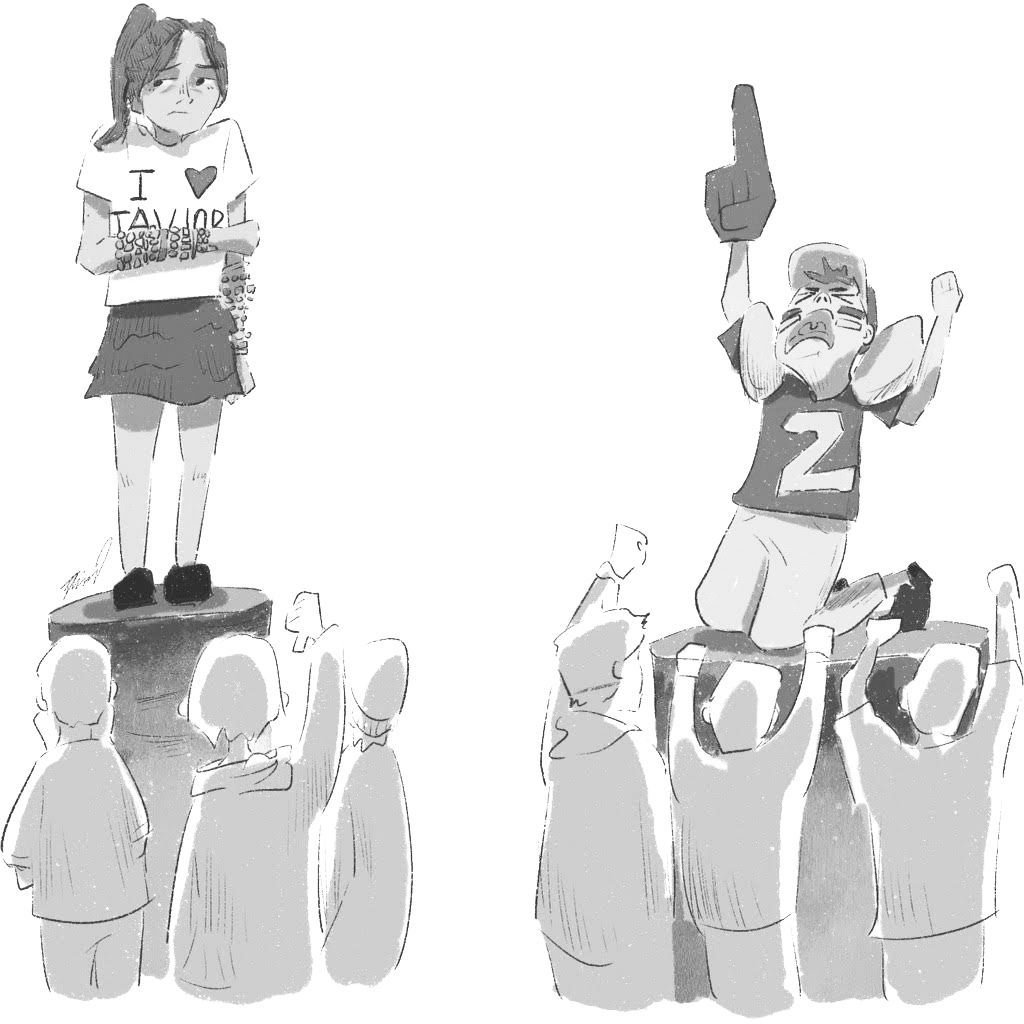Throughout the college admissions process, I’ve had quite a few late nights. I summed up the last four years of my life, my struggles, my hobbies, and my entire character into a few forms and essays for some admissions officers whom I never have and never will meet. In return, I received a handful of acceptances, a couple of waitlists, and some rejections. At the end of the day, I’m going to be attending a university I’m incredibly happy with, but the problem is, I have no idea what makes me qualified to attend; in the eyes of admissions officers, what separated me from the thousands of others who weren’t accepted. Millions of other applicants who applied to colleges along with myself, no matter the outcome of their applications, have no idea what part of their application got them accepted, waitlisted, or rejected. Applying for college is already one of the most confusing processes a young adult can go through, and the lack of transparency in admissions decisions hardly helps ease the process.
While colleges, many of them being private institutions, could admit students based on something as arbitrary as the color of their hair, they supposedly pick their admitted class on something a little more meaningful. For instance, Harvard has clear percentiles on its website: the average SAT for admitted students is between a 600 and an 800 on each section. But we all know that good grades alone won’t get you into Harvard, and they reflect this in their mission statement when Harvard says it seeks students who “come from different walks of life and have evolving identities.” With that incredibly specific criteria, students will finally be able to identify if they’re the right fit for Harvard or not. What does “evolving identities” even mean? In addition, the 600-800 range given by Harvard isn’t indicative of anything with such a huge range. Of course, it’s difficult to determine how diverse someone is or how much their identity evolves but greater transparency in admissions would clear the process up greatly.
I don’t think it’s a disputed notion that college admissions officers are hardworking individuals doing their best to build a class with the limited spots they have to admit students. On top of this, colleges are largely private institutions, and they have no legal obligation for admissions transparency. However, with colleges playing such a huge role in the futures of millions, and being arguably one of the only keys to class mobility, their transparency for whom they hand that key to is important to establish legitimacy in from colleges during the admissions process.
Take something like holistic review. Designed so students aren’t judged on GPA and test scores alone, it is the practice applied by many colleges during admissions to take into account extracurriculars, racial background, essays, and a number of other factors. This is a great idea, in concept. In practice however, with colleges being unclear in terms of what factors they really consider or how much they consider them, holistic review turns into little more than a curtain, depriving students of any knowledge of the admissions process. Students are rejected holistically, with things incredibly integral to their identity—their background, passions, life struggles—rejected as a monolith. When students offer such information to colleges and practically write out their life story, they deserve more from colleges. In practice, the benefits of holistic review come with an unfortunate side effect of further obscuring what colleges are looking for. While holistic review is a good practice, students need to given some understanding of what goes on behind the curtain.
Any amount of clarity that colleges can bring to the process is a good amount. Currently, students have no clue what goes on, allowing harmful theories to circulate. For instance, during this year’s admissions cycle, UC Davis rejected what many students thought to be a large number of overqualified students, which led to the theory that UC Davis engaged in increased “yield-protection” (the practice of denying or waitlisting overqualified applicants with the thought that they’ll attend a better college). This may be true, or it could be completely false. The main problem, however, is that students are so starved of any information that wild theories abound and mislead students. It wouldn’t realistically hurt colleges like UC Davis to address students’ valid concerns.
The steps a college could take to fix this lack of transparency are fairly simple. For instance, while difficult, colleges could feasibly tell you in your letter what specifically caused you to be accepted or rejected. Many British colleges, such as the London School of Economics, spell out in their rejection letter what aspect of your application wasn’t up to par. While being faced with one’s shortcomings may seem like a nightmare for the average applicant, American colleges adopting something similar could do wonders in helping students peer into the admissions process and helping the rejected applicant actually better themselves and work harder in that area. Or, I understand colleges would like to keep an air of mystique around themselves and their admissions process, but actions as simple as releasing examples of the process of the evaluation of an applying student could show students what to expect and clarify the confusing admissions process. Maybe some students would try to game the system, but what most applicants want in the confusing world of college applications is clarity. Any steps to explain to students what they should expect from the admissions process is welcomed, instead of admissions seemingly appearing from thin air, with no apparent rhyme or reason to the results.
To put it bluntly, our current process of college admissions is broken. It is shrouded in mystery that only hurts applicants by exasperating their stresses. Thus, it is with a heavy heart that I reject the admissions process, with much more of an explanation than scores of students were given for their rejections. So, to all you admissions officers, I’ll put this in a way you might understand a little more easily:
Dear Admissions Officers,
Thank you for creating a broken college application process. After careful consideration of its merits, I am unable to find your Fall 2018 application aprocess anything even near acceptable. As competition is intense, transparency is considered heavily when deciding. Your transparency and communication with students was simply not sufficiently convincing to be offered a place.
Sincerely, Dean Azar





